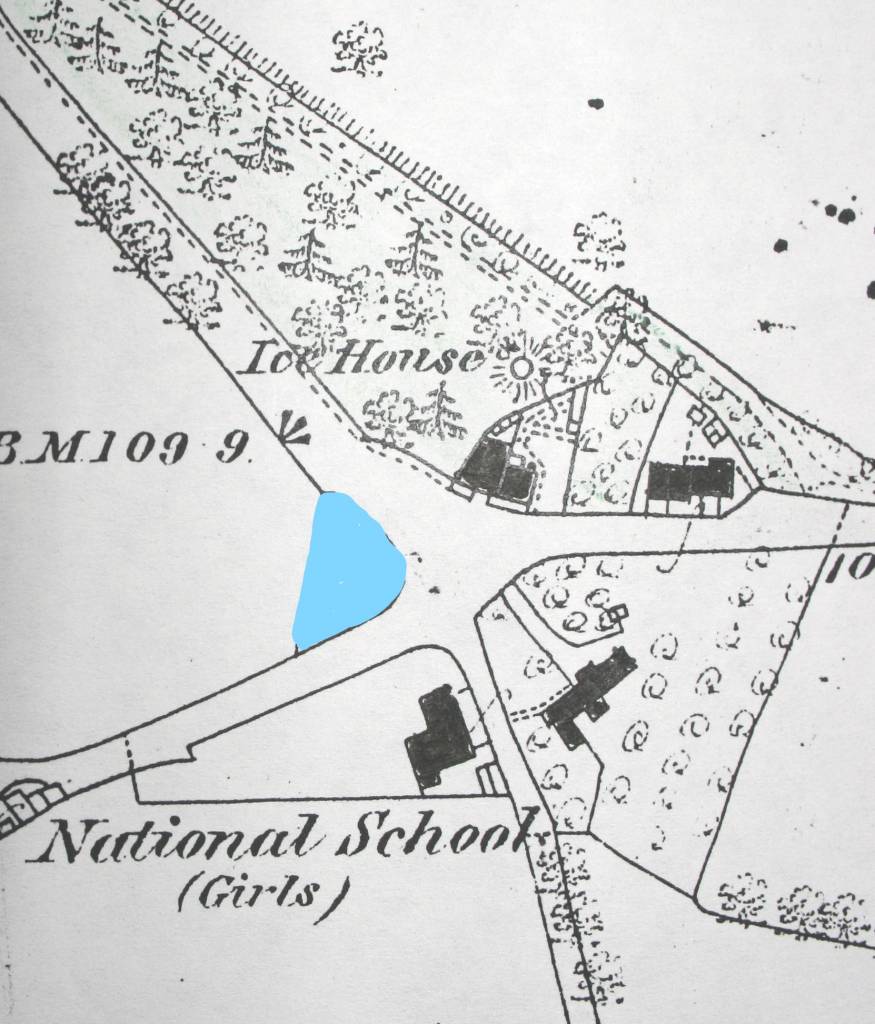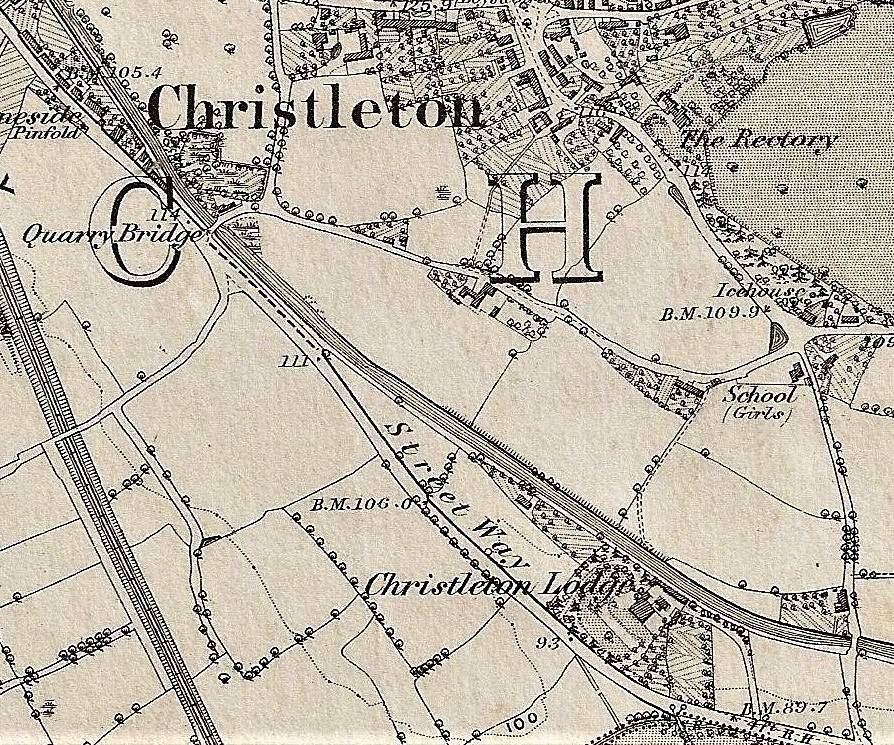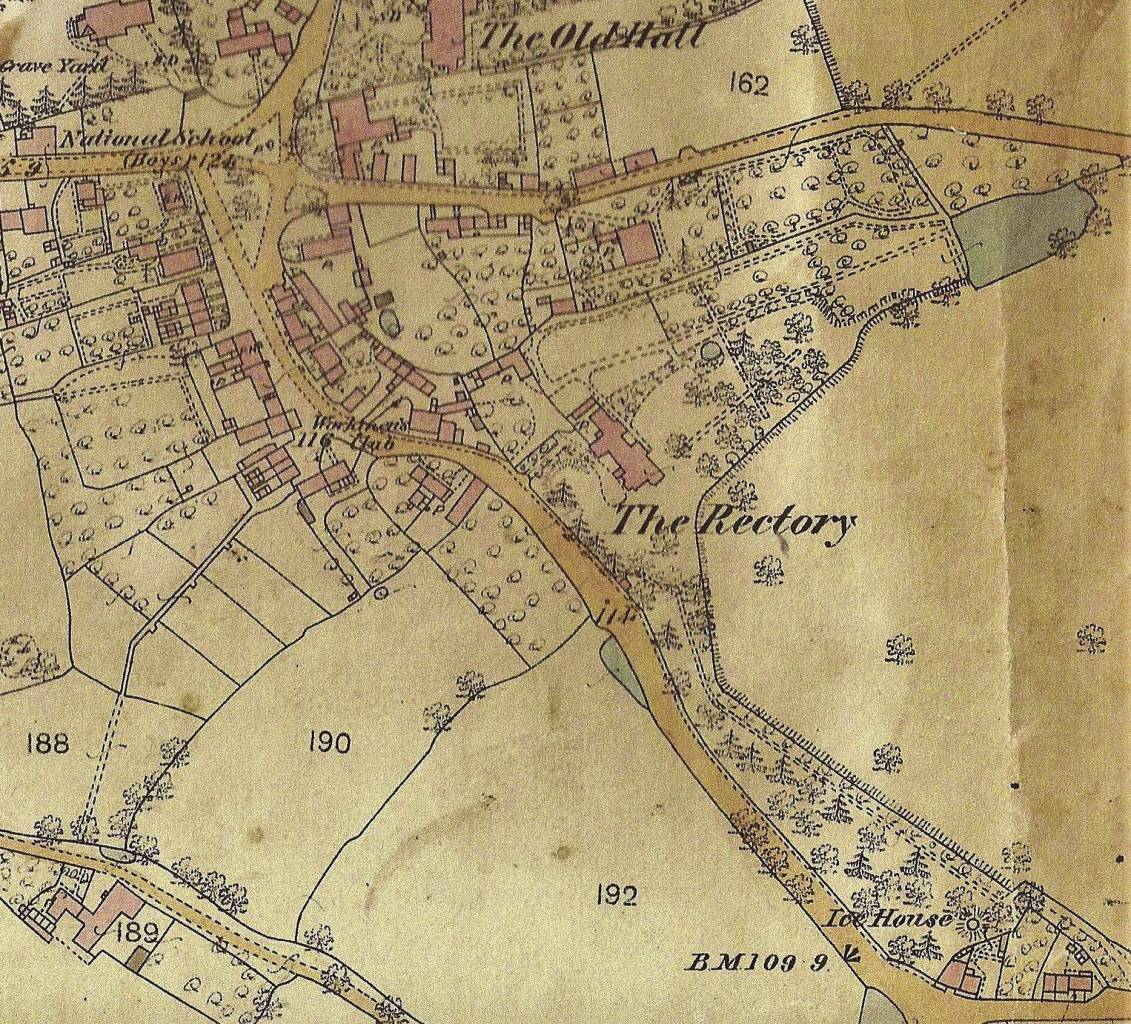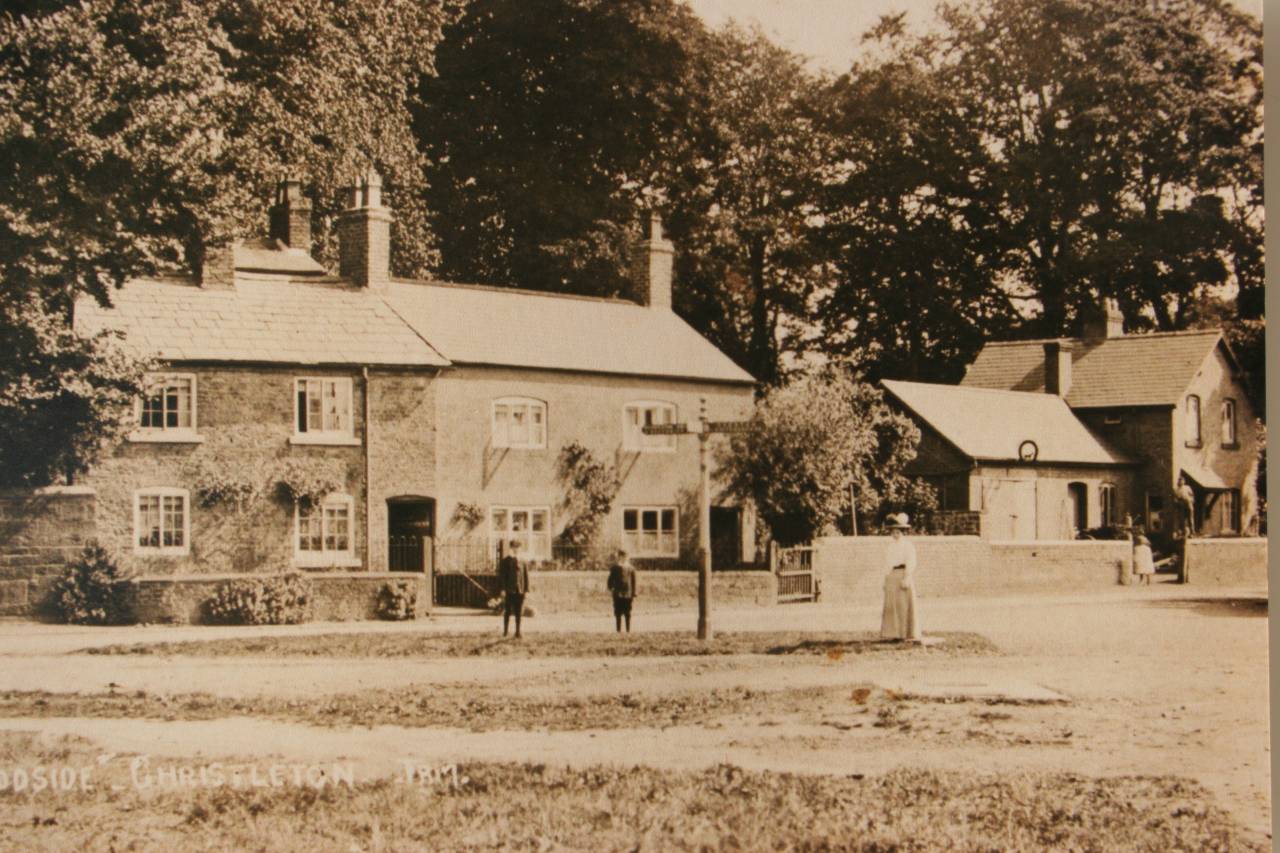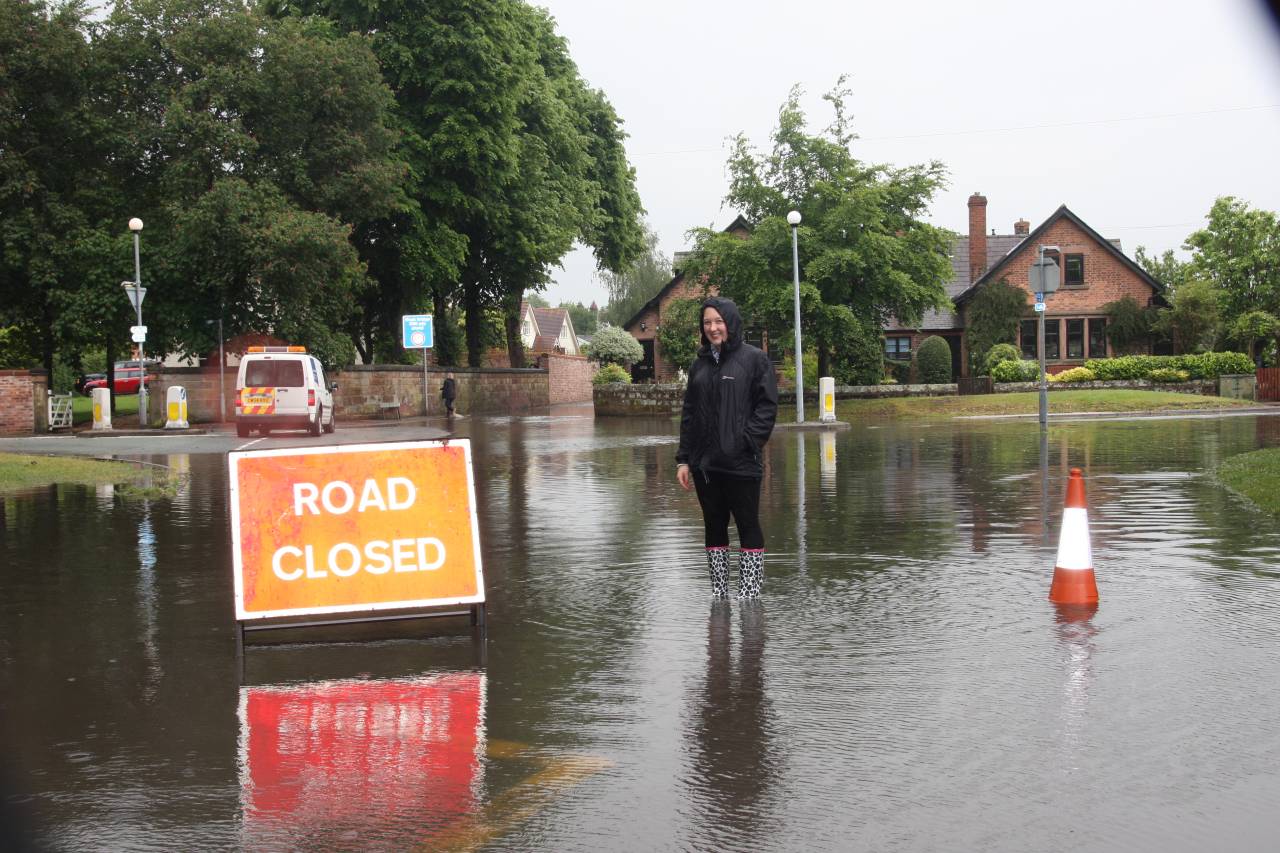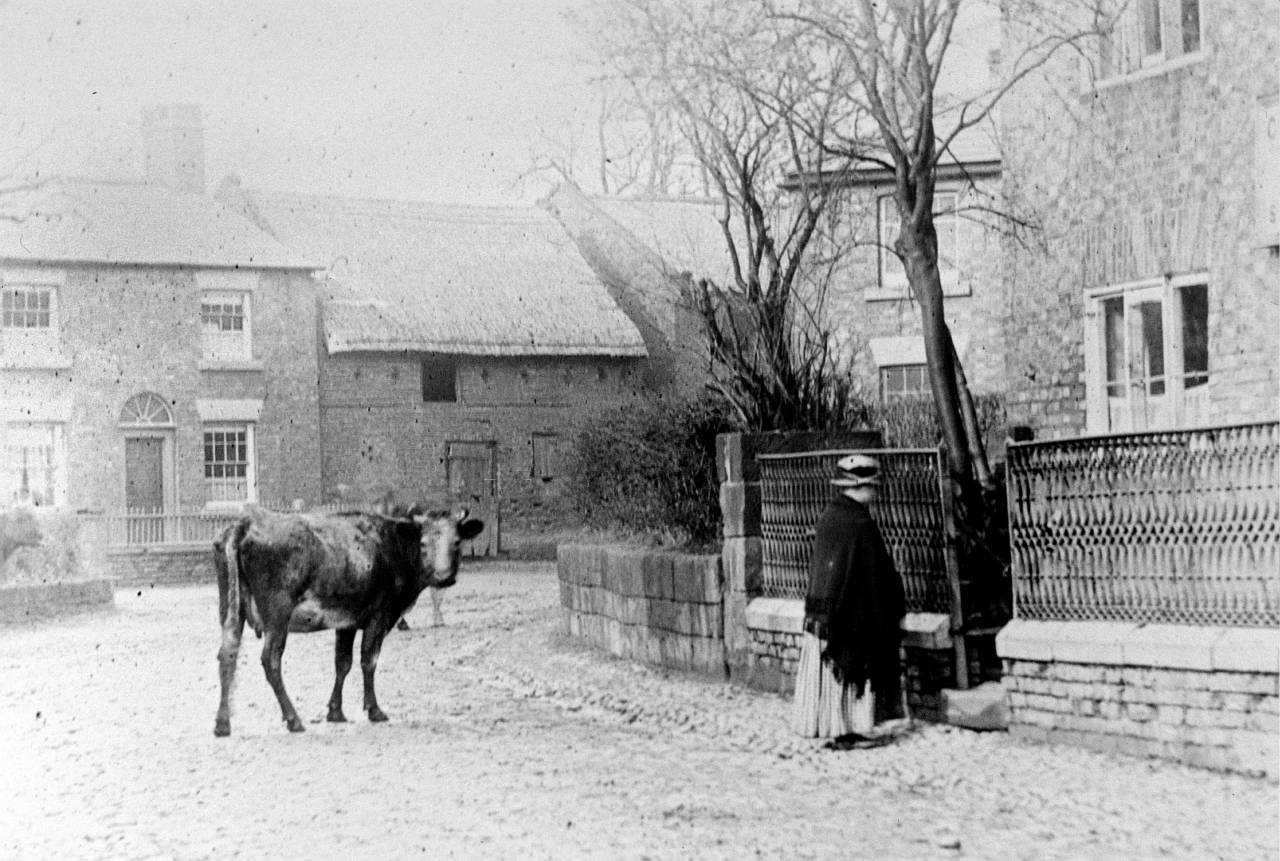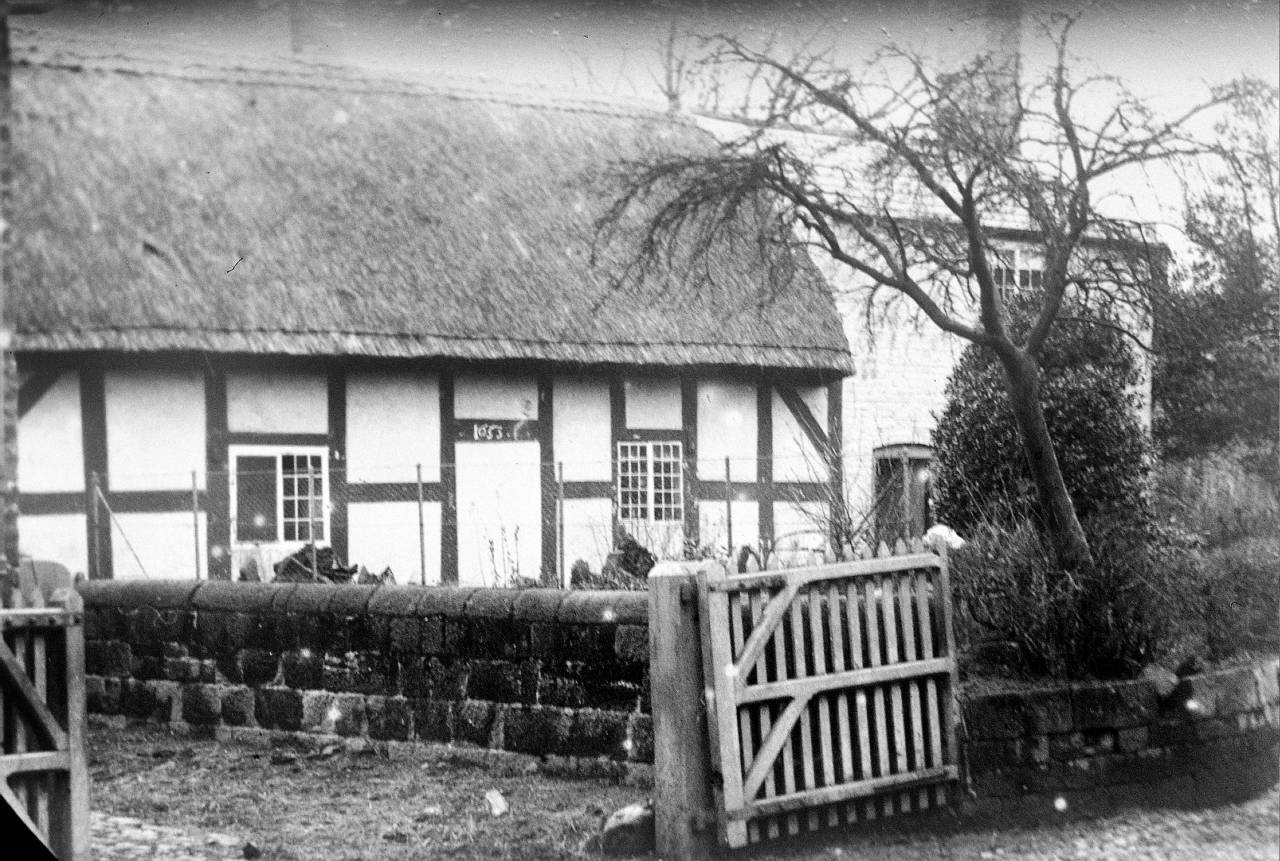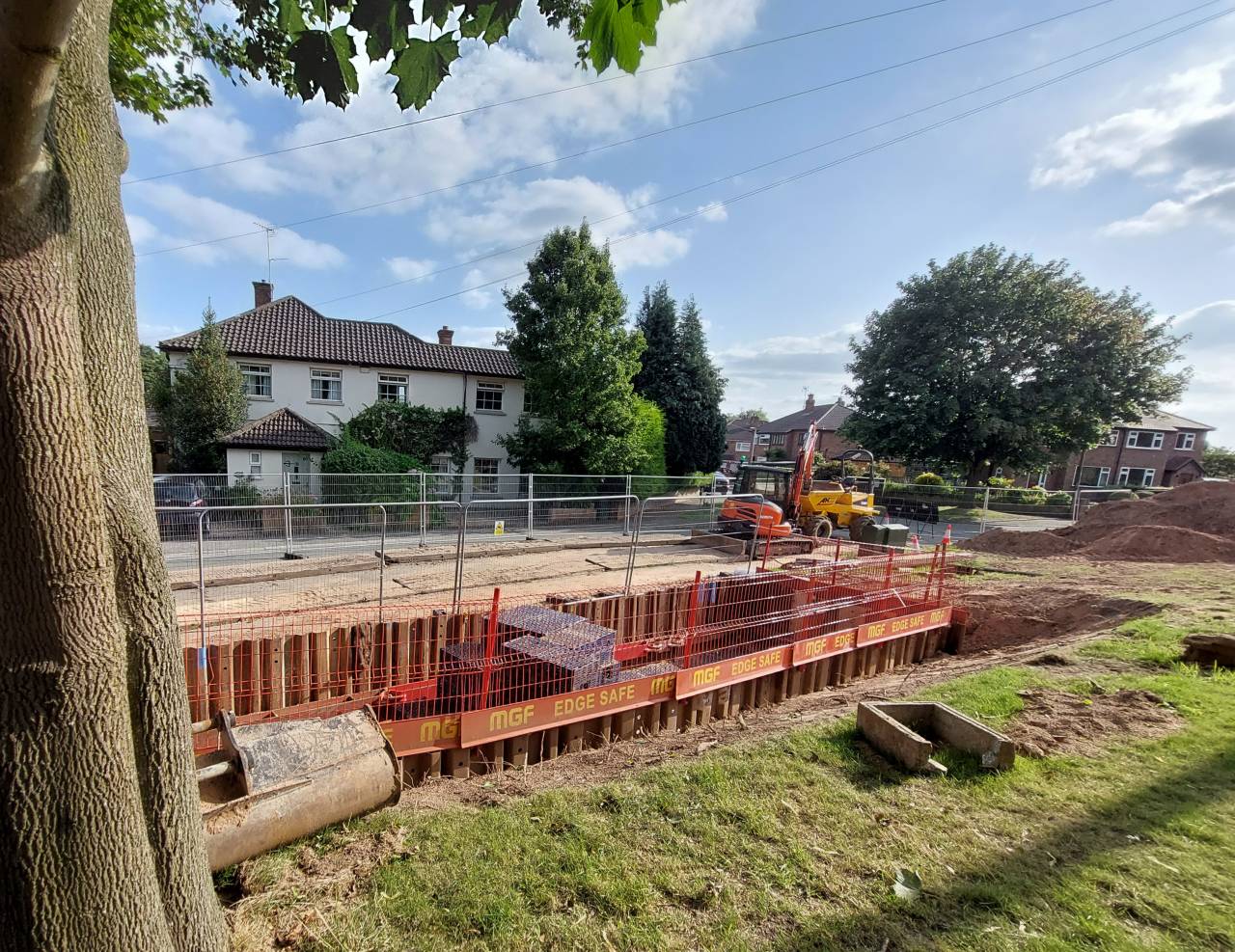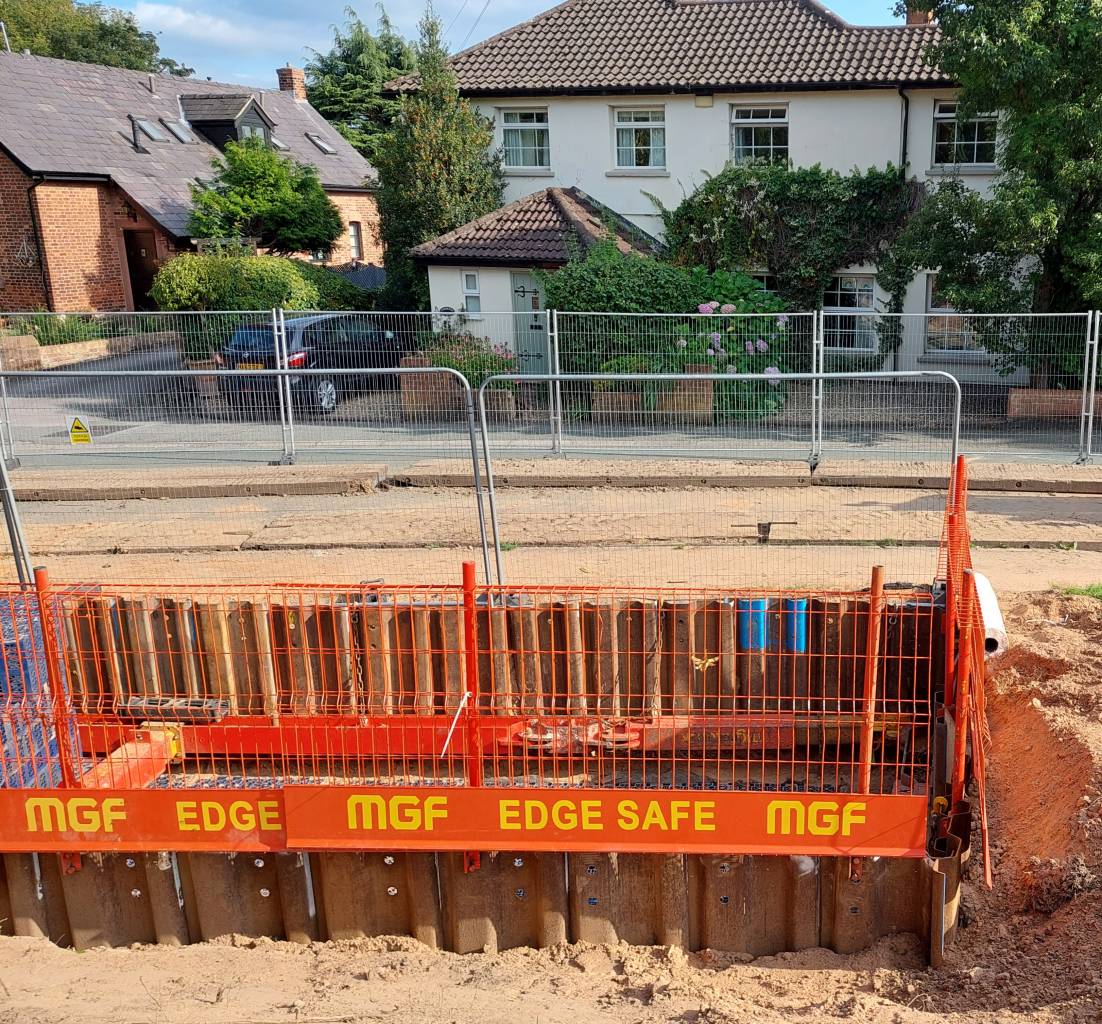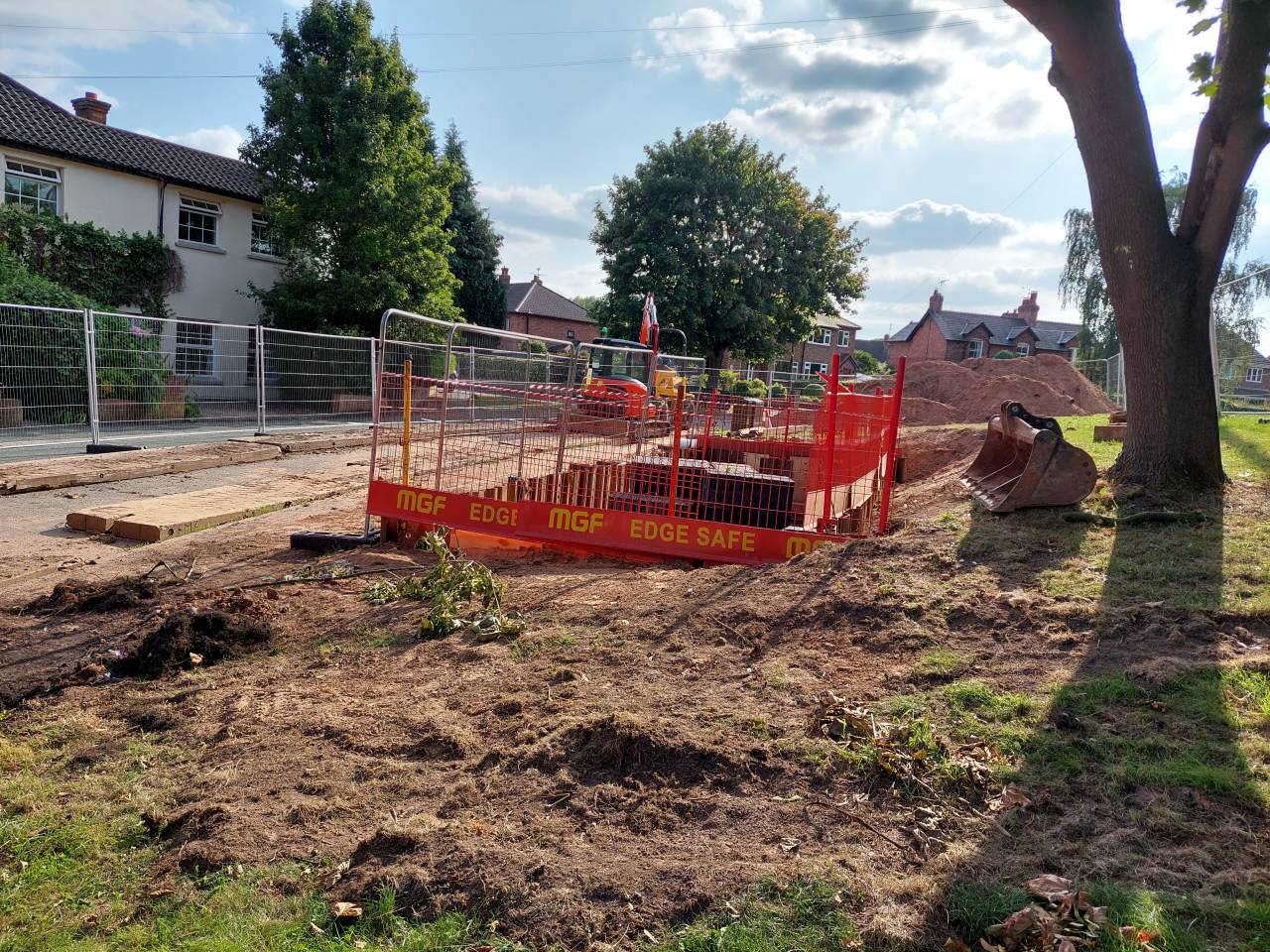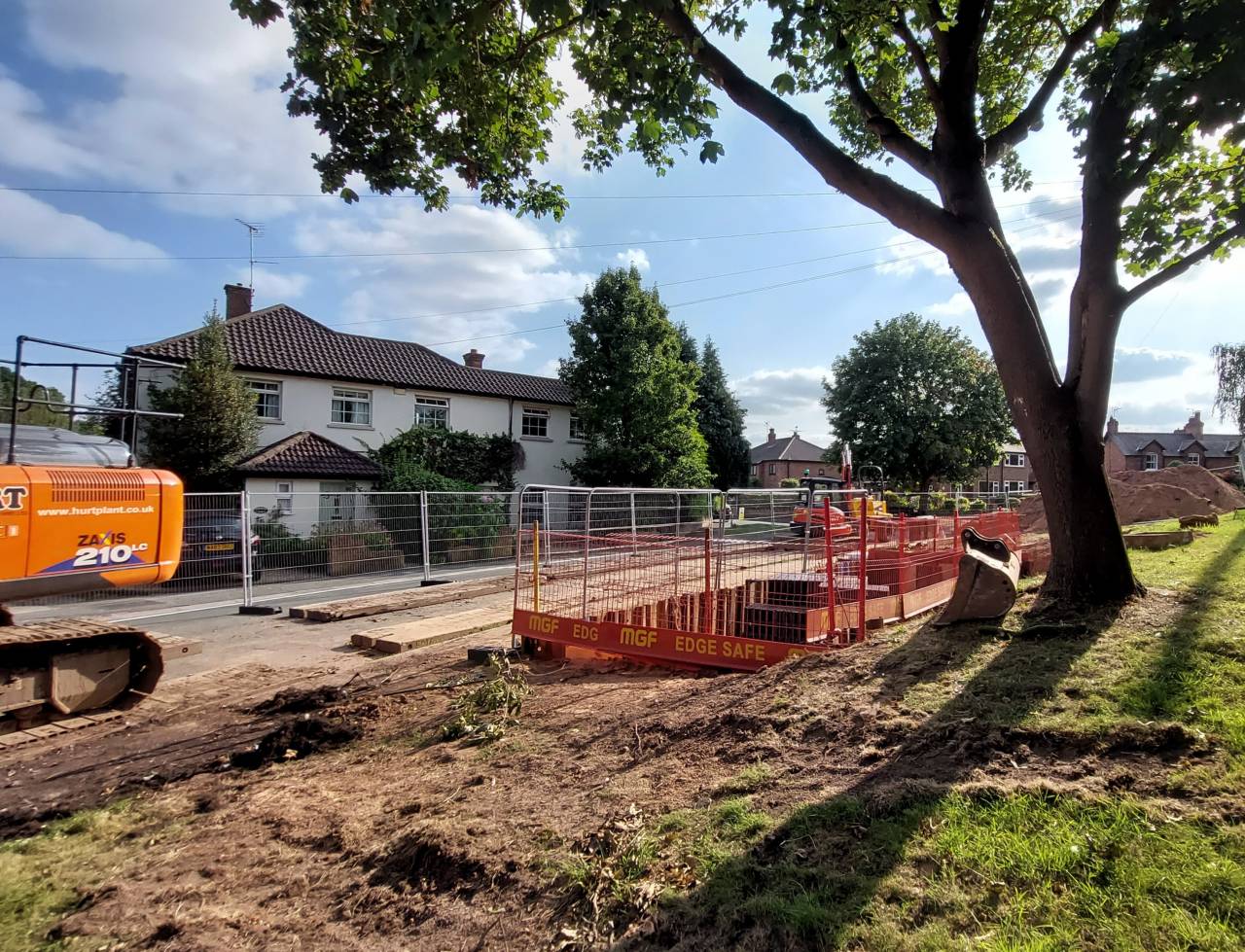
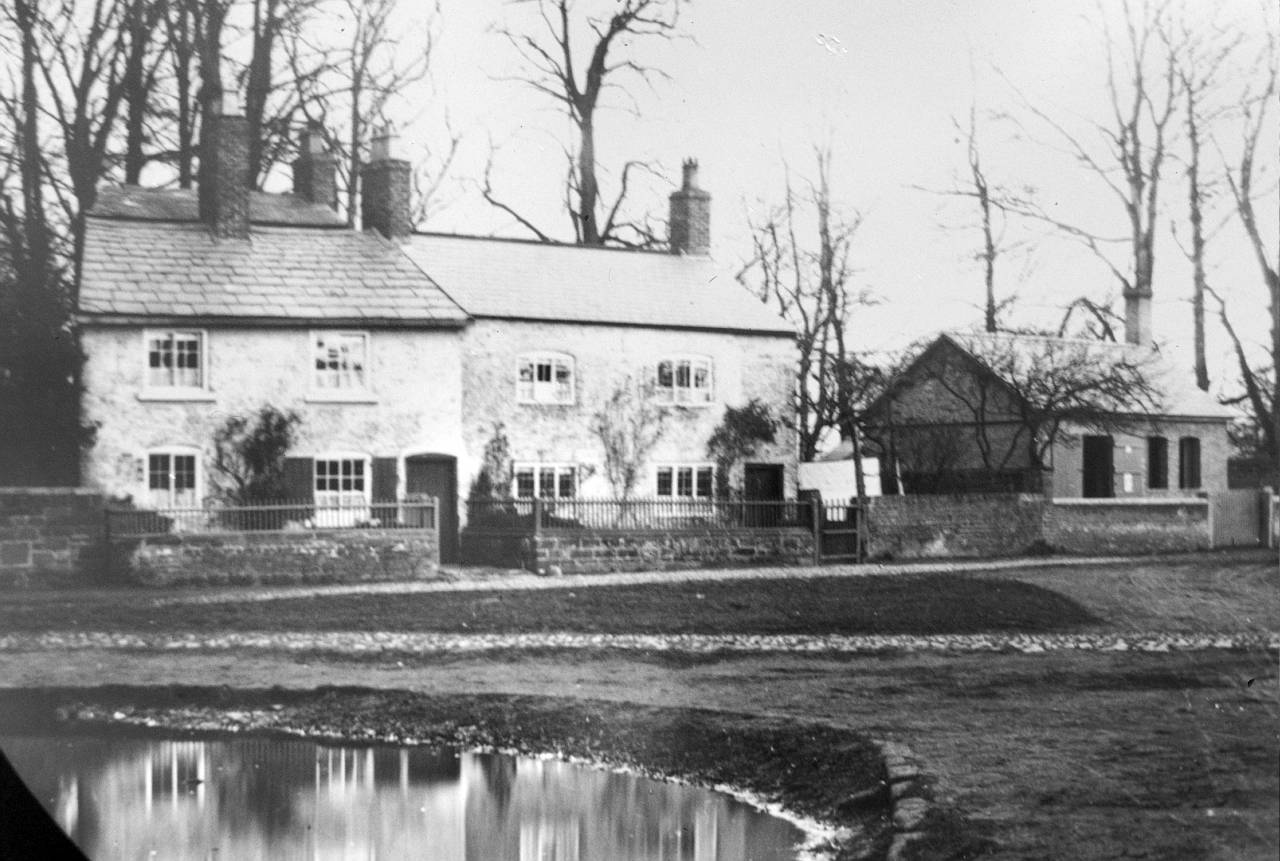
I’m sure many people are as intrigued as I am in seeing a section of Quarry Lane near the old Girls and Infant School closed for a month. There is a huge mound of sand extracted from the hole and lying on the bank, made by some seriously big machinery, and currently, as I write, hollow box sections are now being lowered and secured back into the hole. If you have been following my History File through the year you might remember me quoting this story in the February edition.
“There are lots of records of the village being flooded in the early 1900’s when a village pond at the bottom of Village Road and Quarry lane overflowed, sometimes so badly that children from the Girls and Infants School couldn’t get across the road to get to their homes. The amount of water that fell in the village was compounded by the agricultural sewage that flowed down Village Road from nearby farms. Even the present “toast rack- car park” was formerly a pond for Digger Swindley’s Old Farm. A sewage and waste water system was laid in the village around 1910, but it is believed that the new pipes going through the village weren’t large enough to take any excess flood water under the canal and then into Caldy Brook, beyond the bend of the A41 opposite the "Cheshire Cat". This flooding still happens today, but not as often as it used to, as the council have put in a water pumping station in Sandrock Road.”
It is clear that following recent flooding another major attempt is being made to solve this 100+ year old problem, but what is fascinating is that the material from the hole seems to be almost complete sand. Maybe this is partly glacial sand that was deposited in the last ice age, but I would have expected to see some evidence of silt and mud from the pond which existed adjacent to this site in the early 1900’s. The excavation is also opposite the site of a very large air raid shelter which was big enough to cater for the children from the boys and girls schools. I understand that this was between the old Girls and Infant School and across the present entrance to Sandrock Road. The name Sandrock Road is very apt in this instance. As far as I am aware no photographs exist of this air raid shelter, but I have met adults, who were children at the school in the village in the 1940s, who clearly remember going into it. It must have been very substantial, to cater for the numbers of children attending school in the village at this time, as they included evacuee children from St Patrick’s Catholic School in Liverpool, who shared the schools in Christleton with local children.
Reports in the School Log Book in 1940 record;
May 17th During the past week the children have had Air Raid Drill each day. The Headteacher received the 10 keys for the Air Raid Shelter
May 21st Mr Solloway, Head Warden for Christleton, inspected the children’s gas masks during the afternoon session.
August 30th. Attendance very low in morning and afternoon, due to a long air raid warning during the night.
Sept 6th. During the week the curriculum has been interrupted by Air Raid Warnings during the day and night
Sept 13th. During the week attendances have been lost through air raid sirens through the nights
Sept 20th This past week the curriculum has been considerably interrupted by air raid warnings during the day. The Policeman called to examine the children’s bicycles.
Nov 29th Attendance was low owing to intense enemy action during the night.
As I mentioned at the beginning of this article the inspiration for this story is the hole in the road in Quarry Lane. So much of history is lost through not being recorded, but in Christleton we have the benefit of people still being alive who remember the situation, and old photographs from the Village Archives which sometime reveal things that people have forgotten. I had a long discussion with a member of the Highways Authority some years ago who said there were no records of a pond at this particular site. We could not only provide old maps and photographs, but also written records from the Headteacher’s log books. It is my aim to continue to record these stories and publish the photographs on the website so that they are passed on to future generations.
-
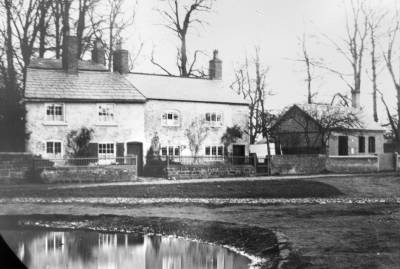
Pond in Quarry Lane, Christleton
-
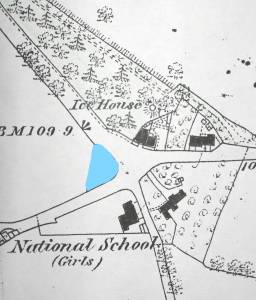
Christleton Village Pond in Quarry Lane
-
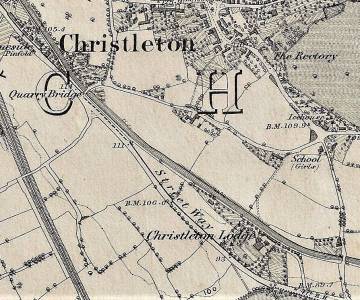
Quarry Lane, Christleton in the 1850's
-
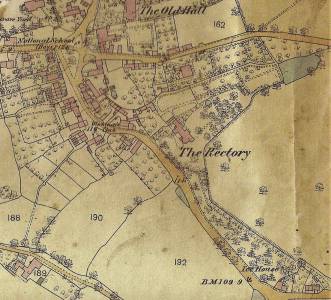
Map showing the Pond in Quarry Lane, Christleton
-
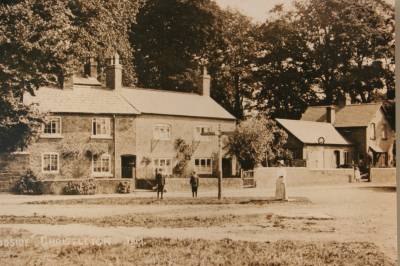
Plough Lane, Chroistleton
-
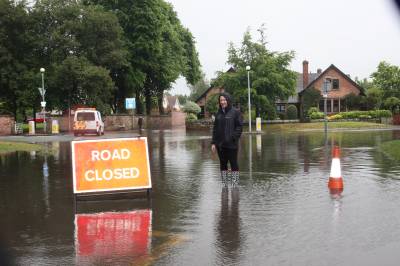
Flooding in Christletonin the 2000's
-
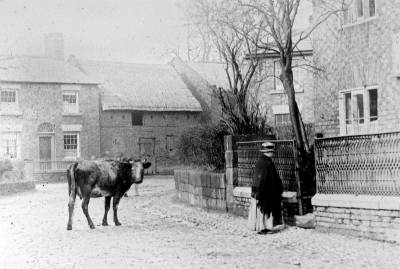
Cattle in the village of Christletonin the 1900's
-
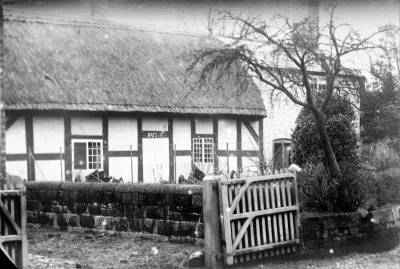
The Old Farm in Village Road, Christleton
-
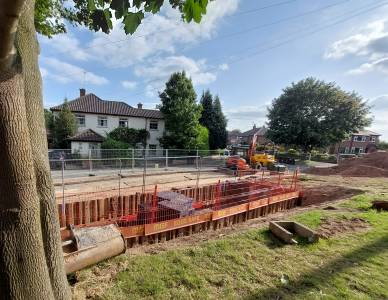
Excavation in Quarry Lane, Christleton in August 2021
-
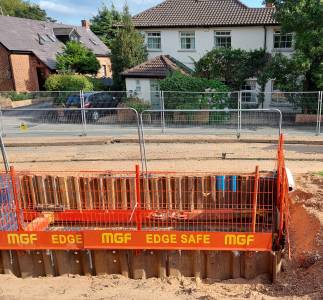
Excavation in Quarry Lane, Christleton in August 2021
-
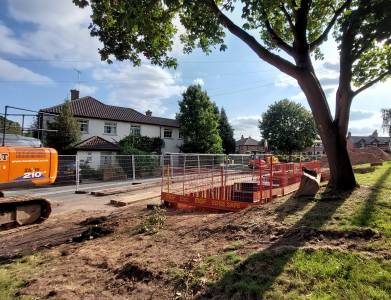
Excavation in Quarry Lane, Christleton in August 2021
-
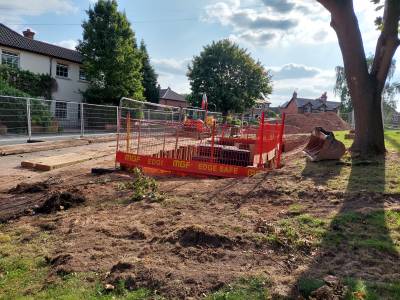
Excavation in Quarry Lane, Christleton in August 2021



